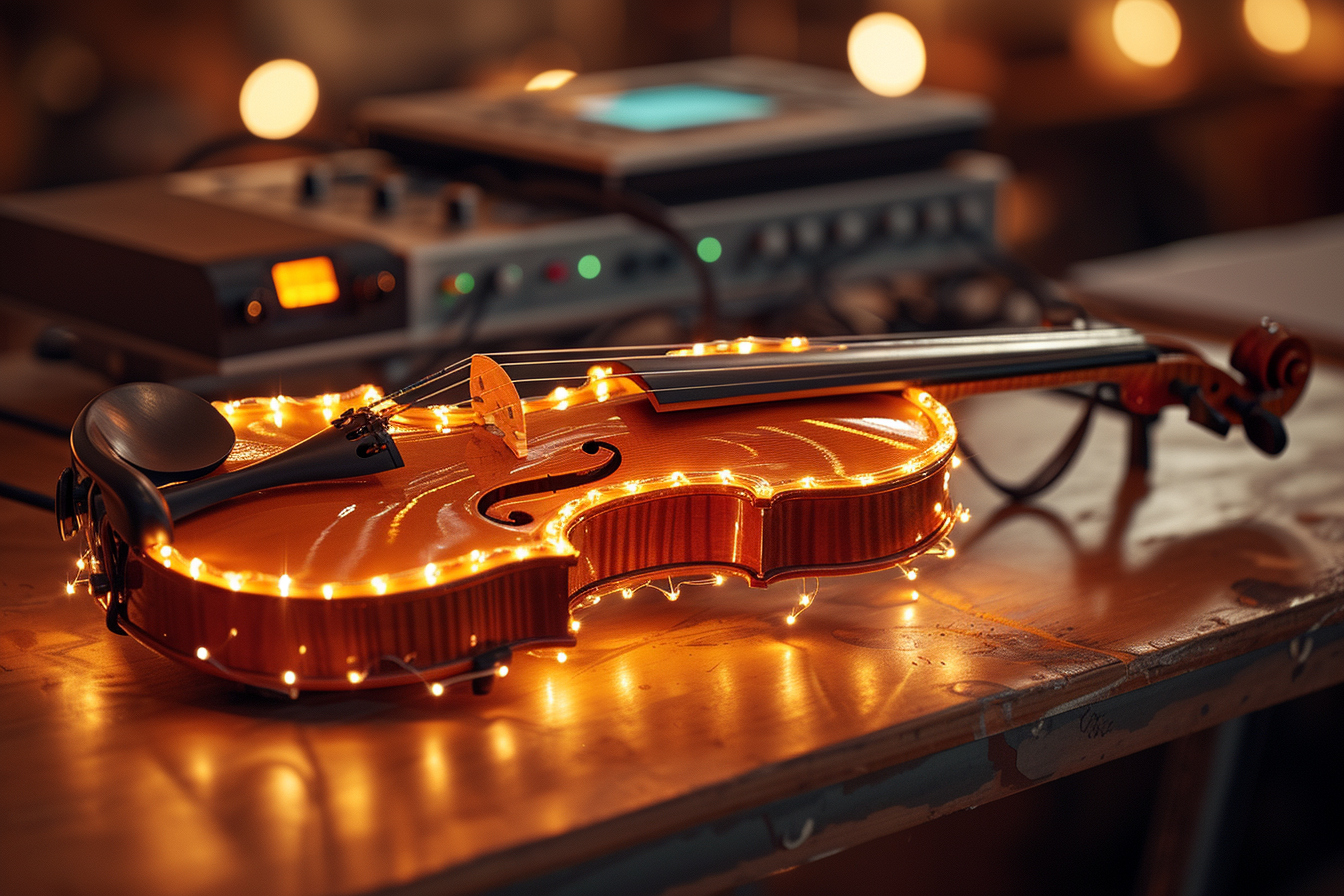Electric violins stand as a testament to the fusion of traditional craftsmanship with modern technology, offering musicians an avenue to amplify their music while expanding their creative horizons. These instruments cater to a variety of players, from seasoned professionals seeking to add an electronic edge to their sound to beginners desiring a practice companion with minimal noise. With the electric violin’s growing popularity, there’s an ever-expanding array of options available, making the selection process increasingly complex. Delving into the critical factors to consider will empower musicians to make an informed and personal choice.
Sound quality and electronics
Sound attributes
When it comes to electric violins, the amplification aspect fundamentally alters the sound production. Unlike acoustic violins where the wood and body shape largely determine the resonance and tonal quality, electric violins rely heavily on pickups and electronics. The type of pickup—whether piezoelectric, magnetic, or optical—influences the instrument’s sensitivity to string vibrations and thus its output.
Sound Customization
A key advantage of electric violins is the ability to shape and modify the sound. Musicians must evaluate the onboard preamps and equalizers, considering how these components allow for tonal adjustments. Some models offer pre-set effects or the capability to connect to external devices and software for even greater sound manipulation, catering to an artist’s need for versatility.
Design and build quality
Crafting materials
Electric violins break free from the traditional wooden design, employing a variety of materials such as carbon fiber, plastics, and even acrylics. Each material provides a unique weight, aesthetic, and durability. A musician’s preference in these areas will guide their choice, balancing the instrument’s visual appeal against its practicality for performance and travel.
Ergonomics and Comfort
Playing comfort is paramount, and with electric violins presenting such diverse shapes, finding the right fit for one’s playing style is essential. Some models mimic the feel of an acoustic violin, while others offer radical departures in body design intended for comfort during prolonged use or to facilitate specific playing techniques.
playability
Setup and action
The setup of an electric violin, including the bridge, string height (action), and spacing, affects playability significantly. Musicians must seek out an instrument with a proper setup or have the willingness to adjust it to their preferences, ensuring that the action allows for smooth bowing and fingering without causing strain over time.
Fingerboard and Neck
The material and shape of the fingerboard and neck impact the tactile experience of playing. Electric violins generally offer a variety of neck profiles to cater to different hand sizes and shapes, aiming to provide a comfortable and intuitive playing experience.
connectivity
Amplification options
Electric violins are designed for connectivity, and selecting one means considering how it will interface with amplifiers, recording equipment, and performance venues. With some violins featuring built-in output jacks for direct connections to PA systems and others offering wireless solutions, musicians have to reflect on their specific needs for connectivity to make the most out of their instrument.
Compatibility with Effects and Pedals
For those wishing to explore the sonic possibilities, checking an electric violin’s compatibility with effects pedals and processors is crucial. The potential to integrate seamlessly with a range of audio equipment opens up avenues for experimentation and innovation in performance.
Budget and value
Pricing and features
Electric violins come in a wide price range, with some models tailored for budget-conscious beginners and others designed as premium instruments for professionals. Assessing the cost in relation to the quality of materials, electronics, and craftsmanship helps in finding the best value for an investment. Considering the long-term goals and potential for upgrades can also factor into making a cost-effective decision.
Warranty and Support
Investing in an electric violin comes with the expectation of reliability and longevity. Checking the manufacturer’s warranty and customer support offerings can give peace of mind, offering assurance of assistance should any issues arise. It’s an often-overlooked aspect that cements the value of a purchase.
Additional considerations

Accessories and extras
From custom cases to shoulder rests and bow selections, the extras that may come with an electric violin or that are available as additional purchases enhance the overall playing experience. Musicians should consider whether these accessories meet their needs or if they’ll need to explore aftermarket options.
Learning and Community Resources
Many manufacturers and retailers offer resources for learning and community engagement, such as online tutorials, forums, and user groups. Engaging with these resources can be a boon, supplying valuable tips and connecting players with others who share their passion.
Final thoughts
The journey toward finding the perfect electric violin encompasses a blend of personal preference, practicality, and artistry. Musicians must immerse themselves in the nuances of sound quality, design, playability, and connectivity, all while weighing their options against budgetary constraints and value. As the market flourishes with innovation, the opportunity to discover an instrument that resonates with one’s individual style and aspirations has never been greater. Whether on stage or in the studio, the right electric violin can serve as a powerful extension of a musician’s creative expression, unlocking a spectrum of sonic possibilities waiting to be explored.

Leave a Reply